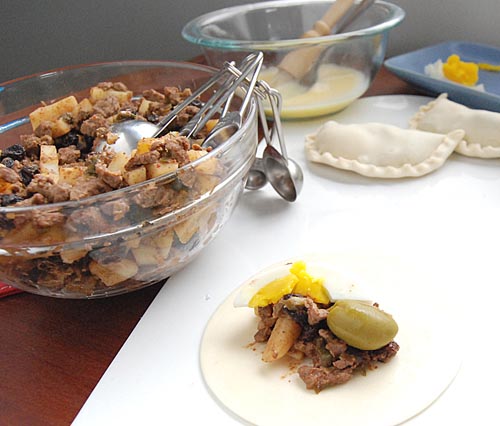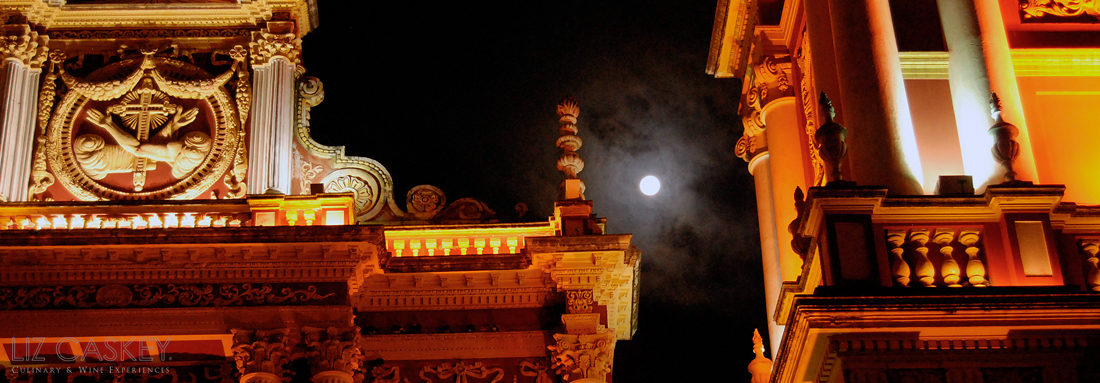Hi all-hope you’re enjoying Labor Day weekend. We (as in all of Chile) had a weird, sad weekend. Friday night a military plane with a TV crew from TVN, Consejo de la Cultura, and team from Desafío Levantemos Chile (earthquake reconstruction effort to rebuild schools & wharfs) crashed in the archipelago of Juan Fernandez who had traveled to the island to inaugurate a new school and cover it for this morning’s news. There were no survivors from the accident. On board was Felipe Camiroaga, one of the best-known faces on Chilean television, host of morning show Buenos Días a Todos. People loved him for his easy-going nature, having him on screen was like welcoming your best friend into your home every morning.
Needless to say, the whole country is in shock. Presidente Piñera has called for two days of mourning to honor the victims. I have to say, my husband and I still cannot believe it. To put this in US terms, imagine if Matt Laurer & the Today Show team, along with say a team from the Bill Clinton Foundation, were traveling to cover reconstruction efforts of Katrina—and their plane crashed and they all died. That’s how big the impact is here. Everyone is reeling to find some sense in this tragedy. In the past month, there has been so much fighting with government over student rights and protests, a general sensation of lack of solidarity among Chileans, these people said, “let’s go show that we need to pull together as a nation. Earthquake reconstruction isn’t over and cannot be forgotten.” And in that noble cause, they perished. It was supposed to be a weekend shoot. I hope that their efforts do not end in the sea; that the noble cause they so firmly believed in will continue and spread. That the country will pull together again as it has with the earthquake and miners. But in the mean time, there is sadness. It makes me give thanks every moment of every day for this amazing gift of life and how blessed we are to be here and make an impact—if we choose.
Getting back to the recipe, September initiates the month of Fiestas Patrias in Chile, a monthlong celebration of Chilean Independence day tied to the heritage. Empanadas are a big part of this month’s festivities but throughout the region, they are hugely popular—probably the most beloved snack and appetizer. Since I am departing this weekend on a trip with clients to San Pedro de Atacama and over Paso de Jama into Northwest Argentina, Jujuy and Salta (including the Cafayate Wine Region). I want to pay homage to the tastiest empanadas in Argentina, las salteñas.
Each province throughout the country, from Buenos Aires to Mendoza and Tucumán, prepares its own variation of a filling. However, Salta is certainly one of the favorites, characterized by their use of finely chopped steak, cubed potatoes, and chili peppers and normally baked in a traditional horno de barro, mud oven. The dough is also much thinner, pliable, and cracker-like with the addition of spring onions, which are used abundantly in the cooking of northwest Argentina. These empanadas are much smaller in size than their Chilean cousins, normally fitting into the palm of your hand. Basically, this means you can put away half a dozen in no time flat.
If you’re in Salta city, visit Doña Salta to try some of the most delicious empanadas in the region, pumped out by the hundreds every day. You can even get them to go.
Ingredients:
2 tablespoons olive oil
3 green onions, minced
1 tablespoon cumin
1 tablespoon paprika
1 pound steak, cut in small dice
1 large potato, peeled and cut in small dice
1⁄4 cup beef stock or water
1⁄2 cup raisins
1 teaspoon salt
1⁄2 teaspoon crushed red pepper
12 green olives, pitted and sliced
3 hard-boiled eggs
11⁄2 packages empanada wrappers, or make your own dough (see below)
1 whole egg, beaten
Method:
• Heat oil; add onions and cook until transparent. Add cumin and paprika; fry 1 minute.
• Incorporate meat;cook for 5 minutes.
• Add potatoes and stock; cook until tender, then add raisins. Add salt and crushed red chili; mix well. Remove from heat; cool.
• Place 2 heaping table- spoons of filling in center of dough. Add 1 olive and 1⁄4 hard-boiled egg. Wet half of dough circle and fold over, pressing to release any air.
• Fold edges to seal. Brush with egg wash and bake at 350F for 12 minutes until golden.

Tips When Preparing the Stuffing:
• Be sure to use a very sharp knife to hand cut the beef. Remove all sinew, excess fat, and fibers before cutting.
• Cut the beef and potato cubes the same size so that they cook uniformly.
• Using beef stock rather than water gives the filling a richer flavor. Use canned stock or bouillon.
• For best results, chill the mixture overnight and stuff and bake the empanadas the next day.
Tips to Fill & Bake
• Empanadas should be chock- full of filling, but don’t over- stuff. Use enough to be able to easily close the seams.
• Wet only half of the dough circle. The water will form a tight seal for the pastry. Hold the pastry in your hand then gently press the air out.
• When folding the empanada, imagine you are twisting a rope to make the decorative edge.
• When eating empanadas straight from the oven, let sit 5-10 minutes to cool down. Be careful not to burn your mouth with steam that escapes from the pockets.

Homemade Dough: You can easily make dough for 2 1/2 dozen empanadas instead of buying shells. Combine 1-pound all-purpose flour, 3 tablespoons lard (or shortening), and 1 to 1 1/2 cups lukewarm water with 1 teaspoon diluted salt. In a bowl, add the melted fat to the flour and stir. Add 1 cup water and bring together to form a dough ball; knead until soft. Pull dough off into
walnut-size balls. Roll out into circles, sprinkling with flour.
Makes 18 Empanadas.
This recipe is an excerpt from Knack South American Cooking. Like it and want to expand your repertoire of South American recipes, get your copy here.













